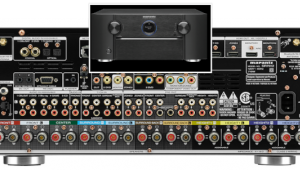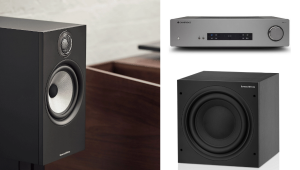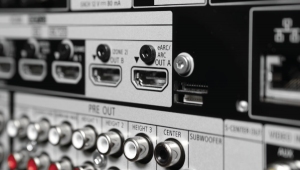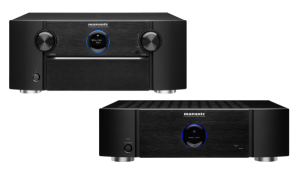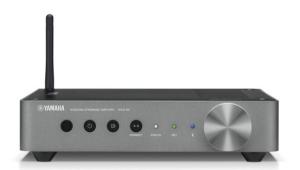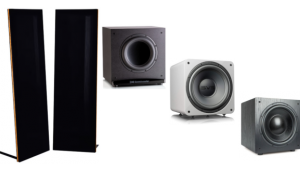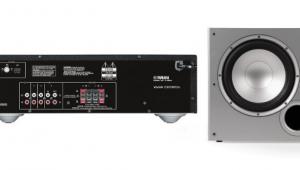Subwoofers, Impedance, HDMI Audio
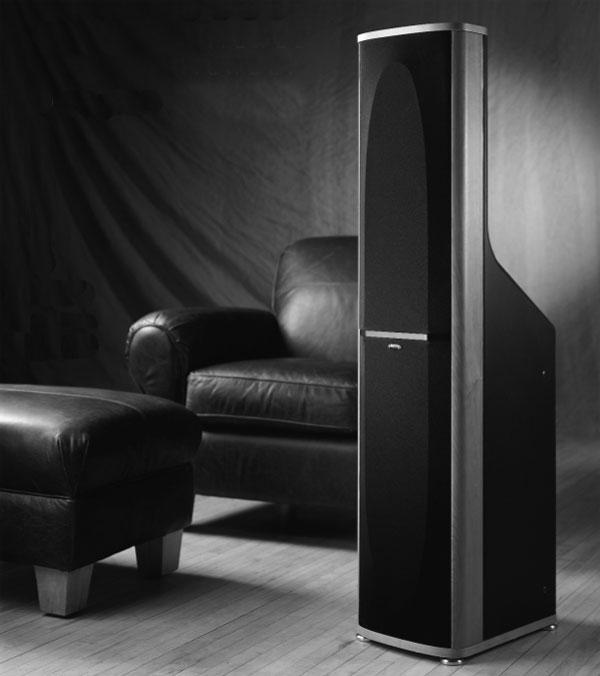
Is there a downside to using speakers with built-in subwoofers? I have a pair of Mirage OM-5 speakers with built-in subs, a Rotel RSP 1098 preamp, and a 5- and 2-channel amp to power seven speakers, all Mirage.
John Seabrook
I talk about this very subject in my latest Home Theater Geeks podcast with speaker designer Sandy Gross. The Triton speakers he designed for his new company, GoldenEar Technology, include built-in powered subs, an approach he advocates because it lets him blend the sound of the sub with the rest of the speaker. He also says that putting two subs in a room helps smooth out room modes.
It's true that multiple subwoofers can smooth out room modes, but I maintain that the ideal location for a sub is not necessarily the same as the ideal location for any of the main speakers, because the placement of the sub dramatically affects how it excites the room modes. Therefore, I prefer to have one or more separate subs. Granted, this means it's up to the user to blend the sound of the sub with the sound of the main speakers, and that blend may not be as good as it is from a speaker with a built-in sub, but I'd rather have the flexibility to place the sub(s) where they produce the smoothest bass.
Impy Dance
Up until a few months ago, I had been blessedly ignorant of the different amounts of power drawn by 4Ω versus 8Ω speakers, but a couple of Home Theater reviews have recently talked about great receivers that may not be acceptable for "power hog" speakers. I presume 4Ω speakers are the power hogs to which those articles referred, right? After reading those articles, I took a closer look at my M&K 750s and learned that they are, in fact, 4Ω speakers.
Now, my Onkyo receiver seems to be approaching the ghost-giving stage, and I'm not sure if its impending death is related to the 4Ω speakers I errantly selected. In any event, it looks like I will get toer, that is, have toshop for a new receiver to drive my M&Ks, and I'm wondering what are the minimum specs I should be looking at. The Onkyo TX-SR608 got a great review from Home Theater, but I'm betting it's a bit weak for my speakers, isn't it? Am I stuck looking at the Onkyo TX-NR5008 or A/V receivers in that class for this type of speaker? My pocketbook and my wife really want to know.
Scott Miller
Low-impedance speakers are indeed power hogsthey draw more power from an amplifier than higher-impedance models. Thus, it's a fairly safe bet that your speakers have been asking a lot from your current AVR, probably more than it's designed to give, which could be why it's approaching the ghost-giving stage.
When shopping for an AVR, the important spec in this regard is the impedance it's designed to drive. Most AVRs, especially those at the lower end of the price scale, are not designed to drive speakers with an impedance of 4Ω or lower, so you're right to be looking at higher-end models, some of which have a switch that configures the output for different impedances.
But even some high-priced models are not designed to power 4Ω speakersultimately, you have to determine this from the specs. Unfortunately, the specs don't always reveal this information, which means finding a knowledgeable dealer or talking to the manufacturer's customer-service department (good luck with that!). Another option is looking at the owner's manual, which is often available online.
The North American version of the Onkyo TX-SR608 is rated for speakers between 6 and 16Ω, info I found in the manual, not the specs. The TX-NR5008 can drive loads from 4 to 16Ω, and it has a switch in the menu system to select the best value for your speakers.
Prima Schema
Which connection scheme will give me the best audio, HDMI to the TV and optical to A/V receiver, or HDMI to AVR?
Dale Hutchinson
Without question, you'll get the best audio from a Blu-ray player by connecting its HDMI output to the AVR, then HDMI from the AVR to the TV for video. HDMI can carry the new lossless audio formats, DTS-HD Master Audio and Dolby TrueHD, while an optical connection cannot. Of course, the Blu-ray disc must include a soundtrack in one of these formats, but most do.
With most other source devicesDVD players, HDTV receivers, etc.HDMI is not better or worse for audio than an optical connection, because these devices send audio in the older Dolby Digital or DTS formats, which optical can carry just fine. Still, to keep it simple, I'd connect everything to the AVR via HDMI, and a single HDMI cable to the TV.
If you have a home-theater question, please send it to scott.wilkinson@sorc.com.
